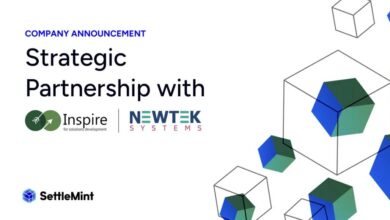Tether Is Starting to Resemble a Central Bank, But Without the Mandate

Once dismissed as a basic stablecoin issuer, Tether has quietly evolved into something much larger.
With a balance sheet rivaling small financial institutions, multi-billion-dollar profits, and a growing list of policy-like decisions, the world’s largest stablecoin operator now mirrors some of the mechanics of a private central bank, even if it remains entirely outside the public system.
A Stablecoin With Central Bank Dynamics
Tether’s latest financial disclosure shows $181.2 billion in assets backing $174.5 billion in liabilities, leaving $6.8 billion in surplus reserves. That figure represents a rare margin of safety in the crypto sector. What’s more, rising global interest rates have transformed its Treasury-heavy portfolio into a profit engine, generating over $10 billion in income in 2025 alone.
These returns place Tether in a unique category: a digital asset company earning the kind of interest income typically associated with banks or state-backed institutions, not startups issuing dollar-pegged tokens.
It’s this combination of scale, profit, and control over liquidity that has drawn comparisons to a “crypto central bank.”
How Tether’s Operations Echo Monetary Authorities
Tether’s internal operations now mimic the structural logic of a central bank in four key ways:
1. Controlling money creation and redemption:
Users mint USDT by depositing fiat and redeem by returning tokens for cash. This mechanism allows the supply of Tether to expand or contract in real time, mirroring how central banks manage the circulation of currency.
2. Managing reserves like a fixed-income portfolio:
Rather than sitting idle, Tether invests heavily in short-term U.S. Treasury and reverse repo agreements, with smaller exposures to gold and Bitcoin. These short-duration instruments provide liquidity and yield, making Tether a nontrivial buyer in the short-term debt market.
3. Capturing digital seigniorage:
While users earn no interest on USDT, Tether collects income from its Treasury holdings. The difference, billions in net profit, functions like modern seigniorage, giving Tether the kind of income stream once reserved for monetary authorities.
4. Exercising policy-style decisions:
The company regularly freezes wallets tied to sanctions, phases out underperforming blockchains, and allocates part of its profit (up to 15%) into Bitcoin. These are internal “policy” actions that directly shape the flow of digital dollars across networks.
Though none of this constitutes formal monetary policy, the resemblance to central banking operations is increasingly hard to ignore.
Beyond USDT: A Growing Financial Empire
In 2024, Tether reorganized into four distinct divisions: Finance, Data, Power, and Edu, highlighting its ambition to evolve beyond digital token issuance. The company now invests in AI and data ventures, energy infrastructure, and educational initiatives.
Its energy arm has partnered with Volcano Energy in El Salvador, backing a 241-megawatt wind and solar facility intended to power one of the world’s largest Bitcoin mining operations. The move highlights Tether’s growing focus on operational resilience and blockchain infrastructure.
The company is also preparing to enter the regulated U.S. market through USAT, a proposed dollar-pegged token to be issued via Anchorage Digital Bank. If approved, it would mark Tether’s first onshore, fully regulated dollar product—complementing the offshore USDT that dominates global markets.
The Boundaries of the Central Bank Analogy
Despite the comparisons, Tether is not a central bank in the traditional sense. It operates with no public charter, offers no lender-of-last-resort functions, and has no government backing. Its transparency practices also fall short of full auditing standards, relying instead on quarterly attestations from third parties.
The firm has long promised an independent audit and claims to be in discussions with a Big Four accounting firm, but no such audit has yet been published.
Critics also point to its history of secured loans, a controversial asset category that has periodically reappeared despite prior commitments to eliminate it. These exposures highlight how Tether’s financial stability still depends on private banking partners and custodians, not sovereign guarantees.
Meanwhile, its “policy actions,” such as freezing funds linked to illicit activity, are primarily compliance-driven interventions, not macroeconomic tools. Still, they reinforce the company’s influence over the flow of digital dollars across multiple blockchains.
A Private Power in the Global Dollar System
In effect, Tether now sits at the intersection of crypto and traditional finance: issuing digital dollars, investing in government debt, and steering market liquidity. It functions as a private, profit-driven institution that performs several roles once confined to central banks, just without the oversight or public mandate.
As the company continues to expand, analysts are watching five critical indicators:
reserve composition, profitability, redemption activity, audit progress, and the rollout of USAT.
Whether Tether ultimately evolves into a regulated financial entity, or remains a decentralized, private liquidity engine, will shape not only the stablecoin market but also the broader relationship between crypto and the global dollar system.





